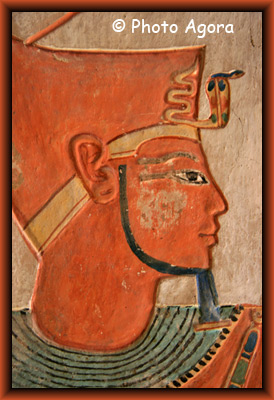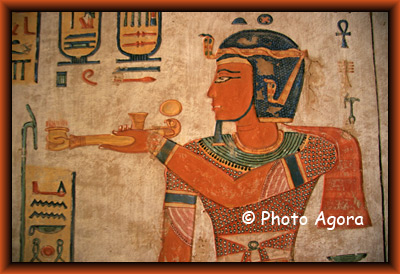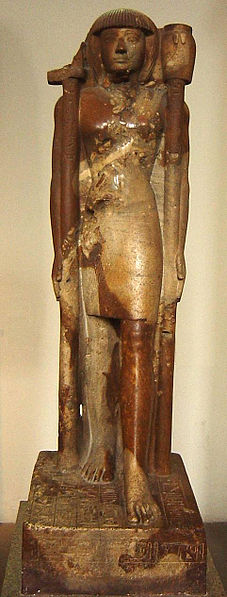Khaemweset
Khaemwaset (including Cha -em- Waset; Chaemwese; * around 1281 BC; † 1225 BC ) held at an early age a priestly position in the Apis cult, which he after completion of construction initiated by him of the Serapeum at Saqqara exercised. Other construction activities and restorations of old memphitischer graves formed the basis for the designation of the first archaeologists.
Background
Origin and first priest activities
Khaemwaset was probably born as the fourth son of Ramses II, the second son of the second Great Royal Wife Isetnofret before the government takeover of his father. In higher priesthood offices Khaemwaset is attested from the 21st year of the reign of Ramses II ( 1259 BC).
These years of his priestly activities Khaemwaset describes itself: " The office of Iunmutef was largely made of Ptah ". Some years later he took over the office of the " High Priest of Ptah " in Memphis, which is ( BC 1248 ) is from the 32nd year of the reign of Ramses II. After another two years, he exerts in 1246 BC activities of the priest title " Horus Iunmutef " from, at this time, however, no explicit mention of a priest " Horus Iunmutef ". Khaemwaset 1246 BC had reached an age of about mid-thirties.
Chaemwasets rise
Khaemwaset hosted some Sed feast of his father. Khaemwaset but is best known from his work in the Memphite necropolis. On several pyramids of the Old and Middle Kingdom he left inscriptions, who call him and his father, attach. This earned him the reputation of the first Egyptologists. Recent research provides the somewhat more differentiated. Most of these pyramids have been torn down by his father, for his construction projects as quarries. The inscriptions seem to have had the purpose to maintain a minimum cult, while the actual pyramid temple have been removed.
He may have gained some knowledge of ancient scriptures and times. His work in the royal cemeteries at Memphis around probably led to the fact that the people holding him even for a sage and magician. His memory was preserved later in the demotic literature in the " Setne stories ". Further evidence of his work are to this day in the temple of Horemheb in Jabal al-Silsilah and the temple of Ptah in Memphis.
Khaemwaset died about 56 years old in his father's 55th year of reign; three years before he was appointed crown prince. His grave was probably at Saqqara, where there were individual components of it.









